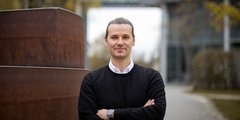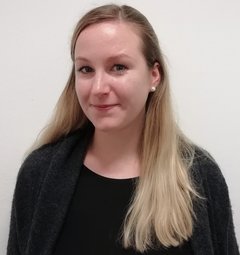Thursday, 23 November, 2023
ERC Consolidator Grants for CeNS researchers Benjamin Fingerhut and Amelie Heuer-Jungemann
The European Research Council supports innovative projects through Consolidator Grants.
Quantum dynamics, and DNA nanotechnology: two researchers from CeNS have been awarded a Consolidator Grant. The award comes with funding of up to two million euros for a period of five years. Through Consolidator Grants, the European Research Council (ERC) helps excellent scientists expand and consolidate their innovative research. The basis for the ERC’s decision in awarding the prestigious grants is the scientific excellence of the applicant and of the proposed project.
Quantum dynamic simulations
Benjamin Fingerhut is Professor of Theoretical Chemistry at LMU. His main research interests include ultrafast dynamics in condensed phase. The interaction of a quantum system with its environment can lead to novel phenomena and possibilities that are not present in isolated quantum systems. This creates the need for computational methods for precise and reliable simulations of the many-body dynamics of open quantum systems. In his project NG-Quapi (Next Generation Quasi-Adiabatic Propagator Path Integral (Quapi) Methods for Condensed Phase Quantum Dynamics), Fingerhut plans to further develop so-called quasi-adiabatic propagator path integral (Quapi) methods to facilitate simulations of the quantum dynamics of complex systems and environments and obtain a better understanding of the phenomena in such systems. As envisioned, the new approaches and algorithms will permit the development of a comprehensive numerical software platform for such simulations. This development has great potential, as it would enable extremely challenging simulations that are not yet possible on conventional computers and are conceivable only on customized quantum devices.
Having completed his doctoral studies at LMU, Benjamin Fingerhut worked as a researcher at the University of California, Irvine, and at the Max Born Institute for Nonlinear Optics and Short Pulse Spectroscopy in Berlin, before returning to his alma mater in 2022.
Source:  LMU Homepage
LMU Homepage
Silicified DNA origami as artificial microcompartments
CeNS member Amelie Heuer-Jungemann has been a research group leader at the Max Planck Institute (MPI) of Biochemistry since 2020. The ERC has awarded her with a Consolidor Grant for her NanoCat project, in which she will develop a new approach for the transfer of enzyme functions in living organisms.
All life depends on enzymatic reactions. These are used, among other things, when we are eating. For example, when we eat a potato, the enzymes in our saliva break down the starch contained in order to produce sugar. We can then use this as a source of energy. However, the introduction of "foreign" enzymes into other living organisms through genetic engineering often means that the enzymes cannot perform their tasks properly or even not at all, as the efficiency of such enzymes is naturally increased by encapsulation. The NanoCat project aims to artificially develop such encapsulations. This is intended to preserve the function of the enzyme activity, even if they are introduced into organisms in which they normally do not occur. Together with Amelie Heuer-Jungemann's recently developed method, with which structures folded from DNA (DNA origami) remain stable but are still accessible for interaction with other molecules, NanoCat aims to develop a groundbreaking new tool. NanoCat is a novel approach that allows enzymes to be used outside their natural environment in a functional way, for example to tackle health problems or global carbon emissions. It is crucial that the size, shape and function of the inserted enzyme encapsulations can be controlled. This will make it possible, for example, to equip plants with new or improved properties, such as significantly increased CO2 fixation without the use of genetic engineering.
Source:  MPIB
MPIB



